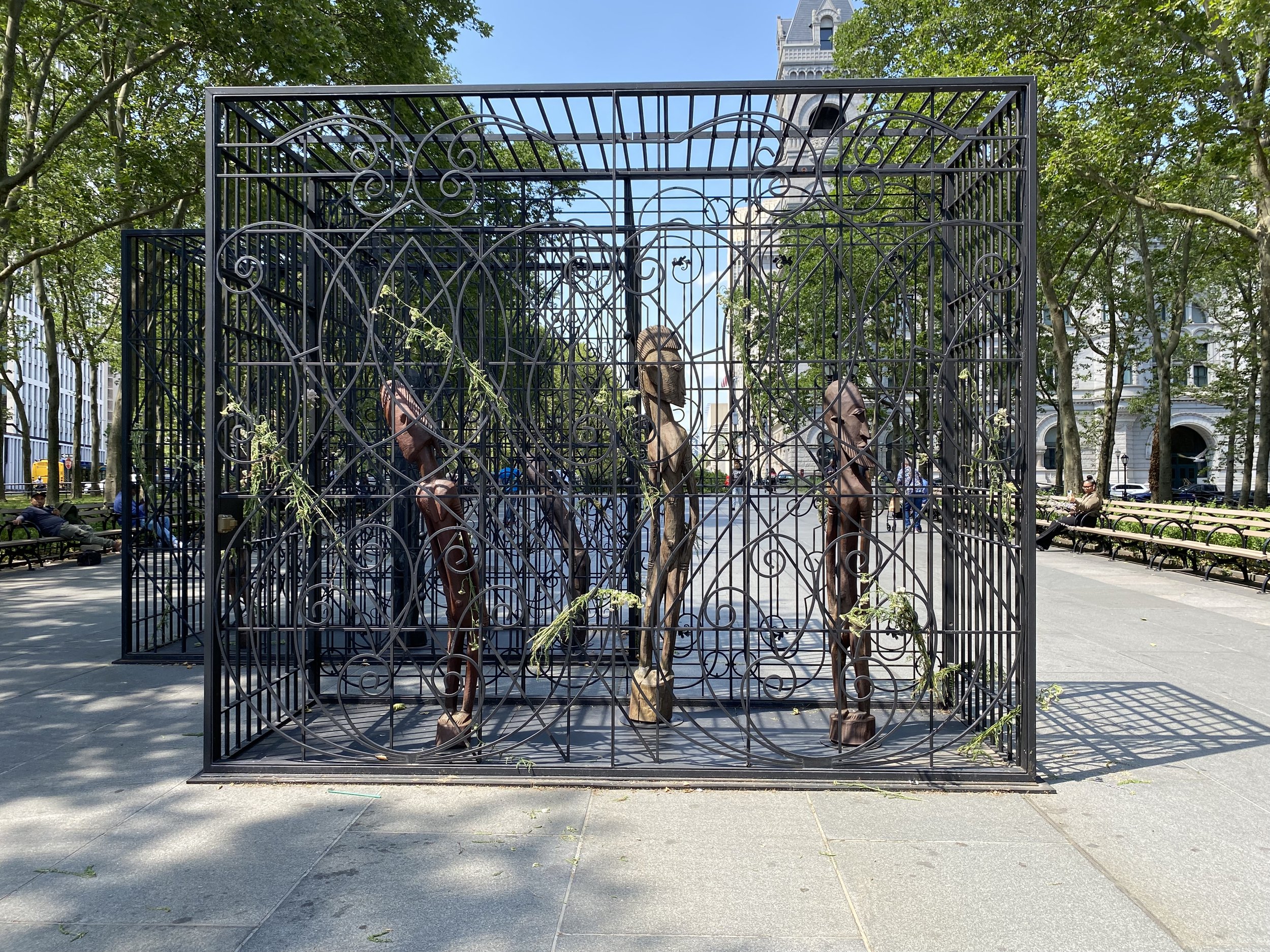Location
Mind Forged Manacles/Manacle Forged Minds,
Fred Wilson, 2022-2023
Columbus Park
Healing Medicine Grows Wild Here
Dandelion—the wandering one. The sun and moon together,
spreading freely from place to place, crowning us with joy,
carrying our prayers in the wind, settling disturbed digestion,
waking sluggish travelers, replenishing vital nutrients.
Vivid Memories Remain Here
Here, in the square, lived a public monument testifying "freedom ain't free," but rather a complex interplay between the cages we construct and those that constrain us. We remember the years and lives lost to slavery and the prison industrial complex. We recognize the wisdom of Fannie Lou Hamer, cautioning us, "nobody's free until everybody's free."

FOUNDING FREEDOM
New York was one of the largest slave-holding colonies in the Northeast. New York State’s first Gradual Emancipation law passed in 1799. It granted freedom to children born after July 4, 1799, but required them to be servants to their mother’s owners until they were 28 years old if they were male, and 25 if they were female.
A second Gradual Emancipation law was passed by New York State in 1817. It restated the delayed freedom clauses in the 1799 law and set July 4, 1827 as the date when any slave born before 1799 would be free.
In one last effort to retain the labor of vigorous young black people, this law required children born to enslaved mothers between 1817 and July 4, 1827 to remain servants until they were 21. In some cases, this clause extended the period of black unfreedom to 1848, but the great majority of slaves were freed by 1827.
For many years afterwards, free blacks across New York State hosted parades and big dinners on July 5th, in celebration. –Melissa Danielle
The Constitution is the law of the land in America. The Constitution protects all American citizens from slavery or involuntary servitude except when an individual is convicted and punished for a crime. This loophole in the 13th Amendment denies convicted individuals the freedoms and constitutional rights extended to other American citizens. America’s corporate prisons prey on the economically disadvantaged with unjust laws that criminalize homelessness, mental illness, inequitable access to education and social services, and poverty. The legal system and law enforcement agencies have a long history of bias against poor and overwhelmingly non-white individuals. Michelle Alexander, advocate and author of The New Jim Crow, says, “There are more African Americans under correctional control, in prison or jail, on probation or parole than were enslaved in 1850, a decade before the civil war began.”
What will we do, not just for us but for our ancestors and generations to come?
Columbus Park hides America’s complicated relationship to freedom in plain sight. Nestled in the middle of Borough Hall, Columbus Park sits at the intersection of the Brooklyn Borough President’s Office and the Kings County Supreme Court—institutions that grapple with serving the people and upholding the law. Home to one of the largest open-air farmer markets in New York City, Columbus Park has statues of Christopher Columbus, Robert F. Kennedy, and abolitionist Henry Ward Beecher. Columbus Park reflects the conflicting history of Brooklyn and the ongoing struggle to provide access to freedom and justice for all.
Waters, Marjorie. “Slavery in New York Classroom Materials Exhibition Companion.” Slavery in New York, https://www.slaveryinnewyork.org/PDFs/Full_Class_Materials.pdf. Accessed 17 July 2023.